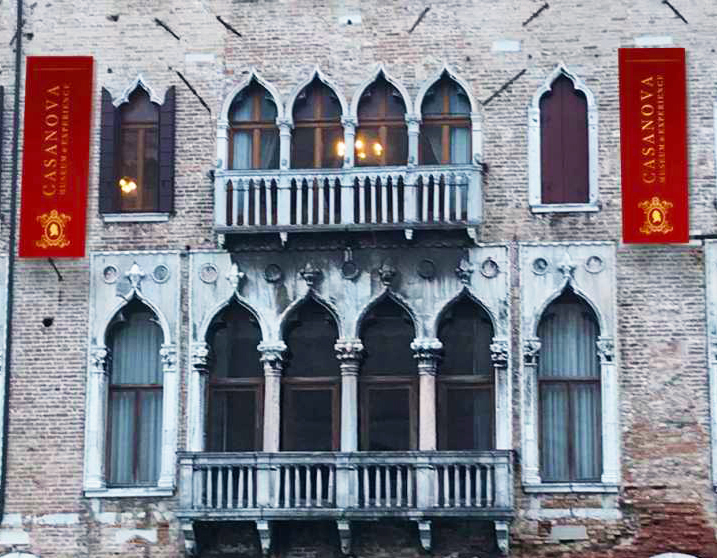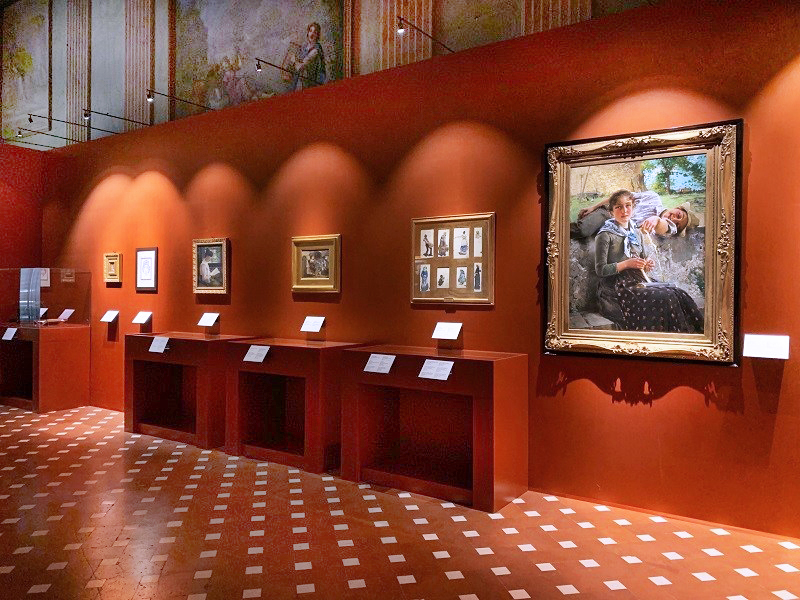She is the gem of the Adriatic, a city of romance, mystery and history. With stunning architecture, winding passageways and of course its famous canals, Venice is one of the most alluring cities in the world. Carnevale has now begun in the famed city, which is known by many names, such as “The City of Love,” “The Floating City” and “The City of Masks.” Love and mystery have played a significant role in its history and the mystifying island has been the birthplace of many famous figures – traveler Marco Polo, the entire Venetian school of painters – from Tintoretto to Canaletto. It has been the birthplace five popes, countless writers, world famous composers. It has given the world art, culture and international commerce. Yet no one so perfectly ties together the mystery and romantic elements of the city better than Giacomo Casanova.
Casanova was a legend in his own time and his myth has only grown in the three centuries since his birth. The mere mention of his name brings to mind images of adventure, intrigue and of course, seduction. Intelligent, charming and cunning, Casanova survived on his charm and wits, as well as gambling and deception – all with equal success. The beautiful women of Europe were at his mercy for more than one reason and the men coveted his alluring ways and romantic suasion.
Giacomo Girolamo Casanova was born in Venice in 1725 to actress Zanetta Farussi, wife of actor and dancer Gaetano Casanova. He was the first of six children, but Casanova railed against his lowly roots, famously stating, “to be an actor in the 18th century was little better than being a prostitute.” He was born on Calle Malipiero, a typically narrow Venetian street, where today, a plaque marks his birthplace. A sickly child, one of Casanova’s earliest memories was traveling by gondola to a doctor on the island of Murano. He was cured by what he described as a “magical ritual” which sparked a lifelong fascination in medicine, alchemy and black magic. At the age of nine he was sent to school in Padua. Conditions at the boarding school were appalling, so he appealed to be placed under the care of Abbé Gozzi, his primary instructor, who tutored him in academic subjects, as well as the violin. He moved in with the priest and his family and lived there through most of his teenage years. Early on, Casanova demonstrated a quick wit, an intense appetite for knowledge and a perpetually inquisitive mind. He entered the University of Padua at 12 and graduated five years later with a degree in law, a profession for which he had an “unconquerable aversion.”
Back in Venice, Casanova started his clerical law career. By now, he had become something of a dandy -tall and dark, his long hair powdered, scented and elaborately curled. He quickly ingratiated himself with a patron, Venetian Senator Alvise Gasparo Malipiero, who moved in the best circles and taught young Casanova a great deal about good food and wine and how to behave in society. Casanova was caught dallying with Malipiero’s intended, so that ended that chapter of his life.
Leaving Venice, he found employment as a scribe with the powerful Cardinal Acquaviva in Rome. He met Pope Benedict XIV, who learned to value him because of his conviviality. Aside from his ecclesiastical duties, Casanova also composed love letters for another Cardinal, but unwittingly became the scapegoat for a scandal involving a local pair of star-crossed lovers. Cardinal Acquaviva dismissed Casanova, thanking him for his sacrifice, but effectively ending his church career. He returned to Venice and became a petty officer. Advancement was slow, the work was dull and although he looked splendid in a uniform, Casanova soon left the military and pursued a life fueled by passion, vice and deceit.
He frequented Venice’s many gambling dens and taverns. He was known to have a flair for black magic and is said to have cured himself of eleven bouts of syphilis by administrating mercury. Believe it or not, such forward-thinking and creative skills won him city-wide admiration. Yet not everyone took so kindly to his outspoken views on science and medicine. He was arrested for his occult activities and for the next 16 months was kept at the Doge’s Palace until he made a spectacular escape. Before leaving on an excursion that lasted nearly 20 years, Casanova took one last look at his homeland, a moment which he describes in his autobiography: “I… looked at the entire length of the beautiful canal and seeing not a boat, admired the most beautiful day one could hope for.”
Casanova left Venice and went on to live a nomadic, varied life that would give him material for his stories. He gave himself the title Chevalier de Seingalt and became a beloved guest and companion at the most elegant courts in Europe. The metropolises of Europe were frequented by Casanova, although gambling debts and erotic intrigues forced him to constantly and quickly change his location.
Wherever he went, Casanova relied on personal charm to win influence and gambling and deception to support himself. Rumors of his escape spread throughout the continent and his womanizing ways earned him a reputation wherever he went. One boastful tale tells of Casanova’s affair with Donna Lucrezia; he is said to have climbed into her bed only hours after having dined with both the woman and her husband. It is stories such as this that Casanova became a legend. His amorous escapades often resembled operatic plots.
For many years, Casanova kept up his famous correspondences with many different women in countries throughout Europe, where he was admired and adored. Yet Casanova’s relationship to the city of his birth, Venice, remained strained. After he was permitted to return in 1772, he found employment first as a theater director and then as an agent for the Venetian government, investigating commerce between the Papal States and Venice. Although never officially described as such, Casanova’s role was to act as a spy. He was quite good at it, when he chose to actually work. Four years into his position, he wrote a vicious satire poking fun at Venetian nobility that incensed the censorship board; he was expelled from Venice once again.
At the end of his life, a bitter and broken Casanova would document his monumental experiences in an enormous twelve-volume autobiography called “The Story of My Life.” The work, which occupied Casanova’s last years, sets the bar high for any aspiring womanizer. This true life account of adventure, intrigue, betrayal and wild conquests would make the hero of any romance novel blush from inexperience.
Giacomo Girolamo Casanova died on June 4, 1798, yet his memory endures. The tales of romance and passion have been retold through many feature films, including the 1976 version directed by Federico Fellini and a 2005 film starring the late Heath Ledger. The legends of Casanova live on and will be forever entangled in the love and mystery that is the city of Venice.





